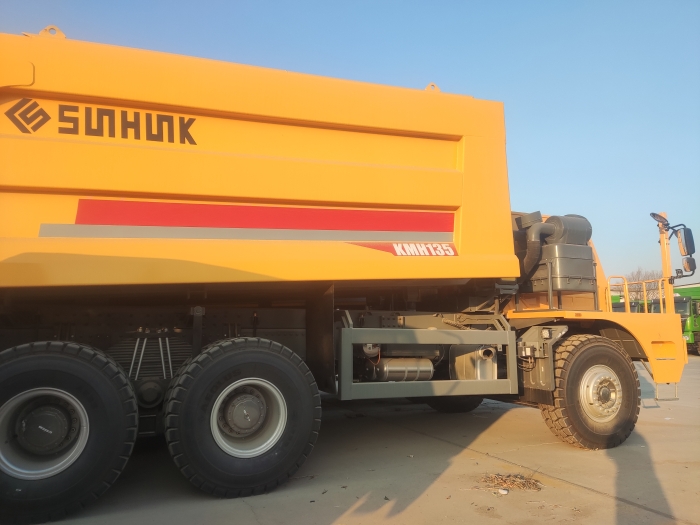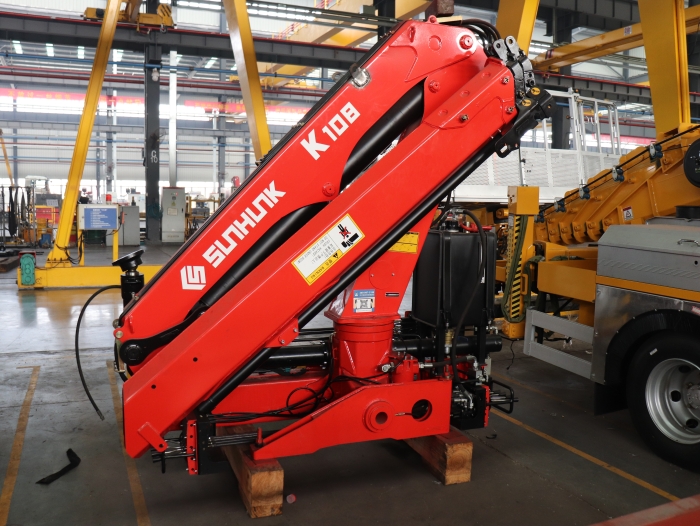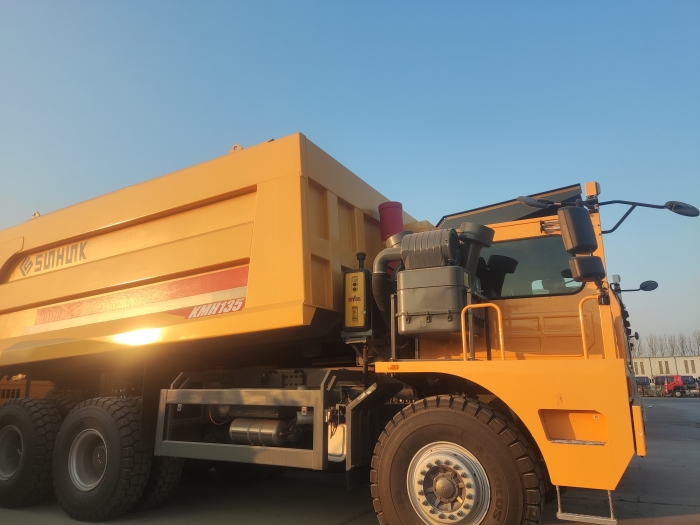- PRODUCTS
- SOLUTION
- SERVICE
- NEWS
- ABOUT US
A 28-foot semi trailer offers greater maneuverability and is ideal for urban use, while a 40-foot trailer has a higher cargo capacity, better suited for long-haul transport.
A semi-trailer truck is a pivotal vehicle in the freight and transport industry, consisting of a tractor unit and one or more semi-trailers. The semi-trailer attaches to the tractor with a fifth-wheel coupling, with the tractor bearing most of the trailer's weight. This design provides a substantial advantage in terms of cargo capacity, allowing for the transport of a wide variety of goods.
Key Features:
· Versatility in Cargo: Capable of transporting a diverse range of goods from dry goods to refrigerated products.
· Economic Efficiency: Reduces transportation costs by carrying large quantities in a single trip.
· Interchangeable Components: Offers flexibility as trailers can be detached and left for loading or unloading while the tractor performs other tasks.
Semi-trailers vary in size to accommodate different cargo needs. The length typically ranges from 28 to 53 feet, the standard width is about 8.5 feet, and the height is usually around 13.5 feet. The choice of trailer size directly impacts its suitability for various types of cargo and transport environments.
Size Specifications:
· Lengths Available: 28 feet, 40 feet, 48 feet, 53 feet.
· Width: Approximately 8.5 feet (standard).
· Height: About 13.5 feet (standard).
These dimensions dictate the trailer's cargo capacity and determine its appropriateness for specific transport scenarios. Smaller trailers, like the 28-foot models, excel in urban and suburban settings due to their maneuverability. In contrast, larger trailers, such as the 40-foot models, are preferred for long-distance hauling due to their higher cargo volume.
The design and functionality of semi-trailer trucks cater to efficiency and versatility in the transport sector, making them indispensable in the global supply chain.

The 28-foot semi-trailer stands out as a versatile choice in the freight industry, particularly for medium-range transport and urban deliveries. Here's a closer look at its specifications and applications:
Feature | Specification |
Length | 28 feet |
Width | 8.5 feet (standard) |
Height | 13.5 feet (standard) |
Load Capacity | 22,000 to 28,000 pounds |
Applications | Urban and suburban deliveries, medium-range transport |
Advantages and Limitations
Advantages:
· Enhanced Maneuverability: Its shorter length makes it highly maneuverable in urban settings and tight spaces.
· Flexibility for Various Loads: Suitable for a wide range of cargo types, especially in city logistics.
· Double Trailer Option: Often used in pairs, known as 'doubles', enhancing transport efficiency within allowable limits.
Limitations:
· Reduced Cargo Volume: Less cargo space compared to larger trailers, limiting its use for large-volume freight.
· Limited Long-Distance Efficiency: Not the optimal choice for long-haul transport due to lower cargo capacity.
In summary, the 28-foot semi-trailer offers an excellent balance of maneuverability and load capacity, making it a preferred choice for urban and regional logistics. Its design and dimensions cater to specific transport needs, providing an essential link in the supply chain, especially in settings where larger trailers would face operational challenges.

The 40-foot semi-trailer is a widely used size, particularly favored for long-haul and heavy-duty transport. Here's a detailed look at its specifications and typical uses:
Feature | Specification |
Length | 40 feet |
Width | 8.5 feet (standard) |
Height | 13.5 feet (standard) |
Load Capacity | 45,000 to 48,000 pounds |
Applications | Long-distance hauling, large-volume freight, intermodal transport |
Advantages and Limitations
Advantages:
· Increased Cargo Volume: Ideal for transporting larger quantities, maximizing efficiency for long-distance routes.
· Economic in Long-Haul: Offers cost-effective transport of goods over vast distances, optimizing fuel and labor costs.
· Versatile in Freight Types: Accommodates a diverse range of cargo, from bulk items to palletized goods.
Limitations:
· Reduced Maneuverability: Its length can pose challenges in tight spaces, limiting its use in urban settings.
· Higher Operating Costs: Larger size can lead to increased fuel consumption and potential for higher toll costs.
The 40-foot semi-trailer, with its considerable size and capacity, stands as a cornerstone in the freight and transport industry for long-distance and high-volume transportation. Its design and capabilities make it a primary choice for cross-country and international shipping, reflecting its critical role in global logistics and supply chain operations.
The size differences between 28-foot and 40-foot semi trailers significantly impact their performance, efficiency, and utility. Understanding these impacts is crucial for selecting the right trailer for specific transportation needs.
Comparative Analysis: 28-Foot vs. 40-Foot Semi Trailers
Aspect | 28-Foot Semi Trailer | 40-Foot Semi Trailer |
Maneuverability | High maneuverability in urban and tight spaces | Limited maneuverability, especially in dense areas |
Fuel Efficiency | More fuel-efficient for short and medium distances | Optimized for long distances, but consumes more fuel |
Passability | Easier to navigate through narrow roads and facilities | Requires wider roads and larger facilities for navigation |
Cargo Load and Type | Suitable for smaller loads and diverse cargo types | Ideal for large-volume and heavy cargo |
Operational Cost | Lower due to smaller size and less fuel consumption | Higher, especially for long distances due to fuel and toll costs |
Detailed Impact:
Maneuverability:
o 28-Foot: Its compact size allows for better navigation in city environments and tight loading docks.
o 40-Foot: Faces challenges in confined spaces, demanding more skillful driving and planning.
Fuel Efficiency:
o 28-Foot: Less fuel consumption for shorter trips, reducing operational costs.
o 40-Foot: More fuel is required, but efficient for long hauls due to higher cargo volume.
Passability:
o 28-Foot: Easily navigates through narrow city streets and congested areas.
o 40-Foot: Requires open highways and large space for maneuvering and turning.
Cargo Load and Type:
o 28-Foot: Limited by size but versatile for various types of cargo.
o 40-Foot: Accommodates larger and heavier loads, maximizing shipping efficiency.
Operational Cost:
o 28-Foot: Lower tolls and maintenance costs.
o 40-Foot: Higher costs due to larger size, weight, and fuel usage.
In summary, the choice between a 28-foot and a 40-foot semi trailer depends on the specific requirements of the transport task at hand. Factors like maneuverability, fuel efficiency, passability, type of cargo, and operational costs play a crucial role in this decision. The 28-foot trailer excels in urban settings and shorter trips, while the 40-foot trailer is more suited for long-distance haulage and larger cargo loads.

Choosing the right size of a semi-trailer is a critical decision in the logistics and transport industry. This choice significantly affects the efficiency, cost, and overall feasibility of transportation operations. The key factors to consider when selecting between a 28-foot and a 40-foot semi-trailer are outlined below.
Type of Cargo:
o General Goods vs. Bulk Commodities: 28-foot trailers are ideal for general goods and frequent stops, while 40-foot trailers are better for bulk commodities and fewer stops.
o Weight and Volume: Heavier and larger volumes favor 40-foot trailers.
Transport Distance:
o Short vs. Long Haul: Shorter distances are more economical with 28-foot trailers, whereas long-haul routes benefit from the larger 40-foot trailers.
Operating Environment:
o Urban vs. Rural: Urban environments with tighter spaces suit 28-foot trailers; rural and open highway settings are more accommodating for 40-foot trailers.
Cost Considerations:
o Fuel Consumption: 28-foot trailers typically consume less fuel on shorter routes.
o Maintenance and Toll Charges: Larger trailers, like the 40-foot, incur higher maintenance and toll costs.
Regulatory Compliance:
o Road and Transportation Regulations: Certain regions have restrictions on trailer size, influencing the choice.
Flexibility and Adaptability:
o Versatility for Different Loads: 28-foot trailers offer more flexibility for various cargo types.
Selection Criteria | 28-Foot Semi Trailer | 40-Foot Semi Trailer |
Cargo Type | Diverse, general goods | Bulk commodities, large volume |
Transport Distance | Short to medium distances | Long distances |
Operating Environment | Urban, confined spaces | Rural, open roads, highways |
Cost Efficiency | Higher in short trips | Higher in long hauls |
Regulatory Compliance | Check local regulations for size limits | Ditto |
Flexibility | Higher for varied cargo types | Lower, more specific to large-scale hauls |
In conclusion, selecting the appropriate semi-trailer size involves a thorough analysis of cargo characteristics, transport distance, operating environment, cost factors, and regulatory requirements. Both 28-foot and 40-foot trailers have distinct advantages and cater to different needs in the transport and logistics sector. The key is to align the trailer size with the specific requirements of each transport task for optimal efficiency and cost-effectiveness.